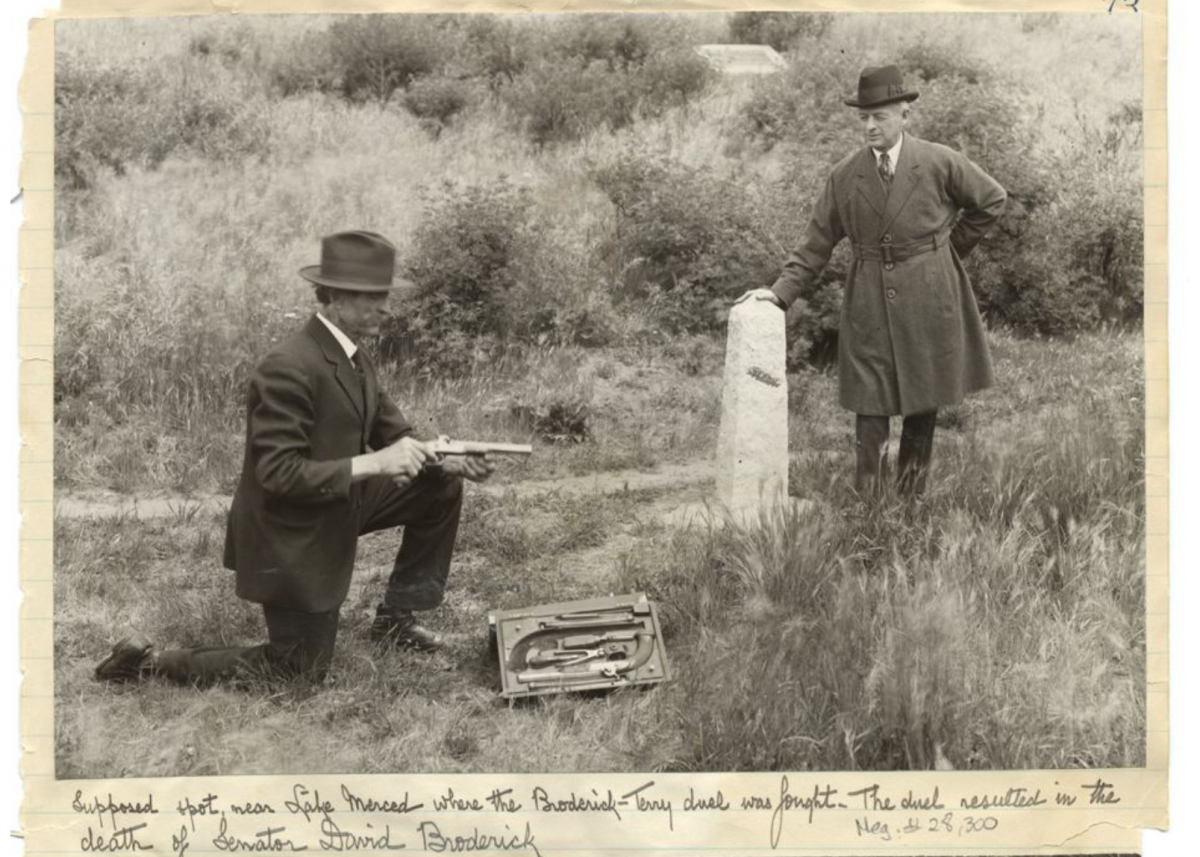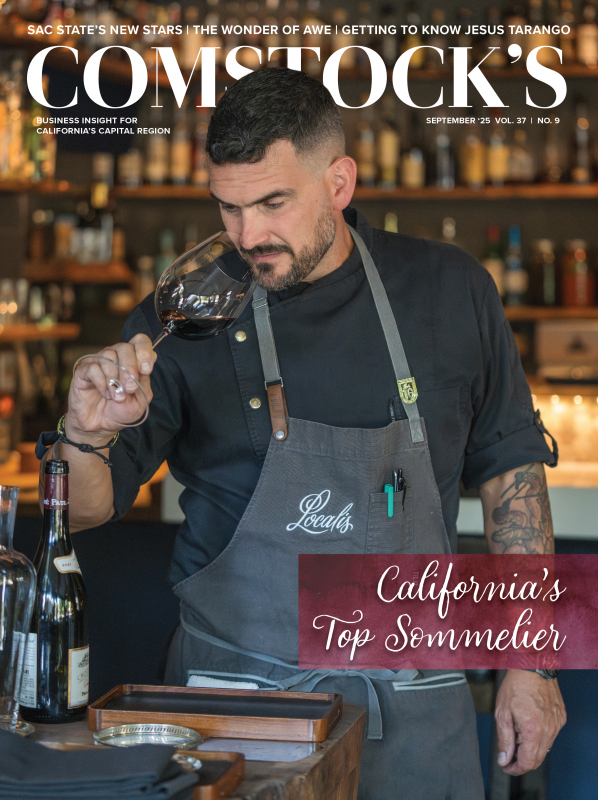FEATURED STORY: California politics in the first years after Congress approved statehood on September 9, 1850, were ever-changing and confusing — and occasionally violent to a degree that’s hard to imagine.
I grew up in the Sierra Nevada foothills, where the landscape is pitted and piled with the remnants of mining activity, and the main streets, erected by the California’s first settlers, are a quaint backdrop for boutiques and holiday parades.
Time has a way of softening the edges. We take comfort in the continuity of old buildings and reframe the darker happenings with legends that can be recited on an age 12+ ghost tour. But if you delve below the surface of these old towns, you’ll find underground tunnels dug to evade bandits, basement opium dens and layers of older towns that burned down or, in the case of Old Sacramento, were raised due to catastrophic flooding.
One such town is Chinese Camp, which was tragically gutted by the recent lightning complex fires. Its historic buildings included a Catholic church and a post office. Reportedly founded in 1849 by a group of English goldminers who employed Chinese laborers, some sources say the town was called Camp Washington before being claimed by thousands of Chinese people who were pushed out of neighboring Sonora.
Chinese Camp was a hub for business and transit, including several Chinese Californian mining companies. Some of its residents fought nearby in the state’s first Tong War, which was a series of battles between rival immigrant factions.
As we observe California’s 175th anniversary, we are marked by our own tragedies of fire and violence. History may blur the suffering, but it is still a thread that connects us to the past.
–Dakota Morlan, managing editor
Other stories you may have missed: How Sacramento Is Investing in Creativity
Sacramento’s Office of Arts and Culture, which traditionally funded arts institutions such as theaters and museums, took advantage of a windfall during the pandemic to help grow the creative economy more broadly. Can the support last?
Dilemma of the Month: Are Career Goals Always Necessary? What if I’m Happy Where I Am?
If the goals aren’t meaningful to you, then they are just paperwork and extra tasks, and for what purpose? Let’s tackle this.
Getting to Know Jesus Tarango, Chairman of the Wilton Rancheria Tribe
Jesus Tarango, chairman of Wilton Rancheria, has led his tribe through major moments such as the acquisition of Sky River Casino and the soccer team Sacramento Republic FC. We talked to him about the tribe’s comeback story and his role in it.
Startup of the Month: Everest Medical Solutions
Doctors call it the “obstetrician’s nightmare”: a childbirth emergency where the baby’s head emerges, but the shoulders get stuck behind the mother’s pubic bone. The founding duo at Everest Medical Solutions has designed a device to make delivery safer and less traumatic when this complication arises.
Recommendations From Our Staff
Jennifer: Right now I’m reading “Foster” by Claire Keegan, an Irish author I first got into during a visit to that country a few years ago. This short, crisp novella reads something like a minimalist “Anne of Green Gables,” with crystalline descriptions of rural Irish life and a rare ability to evoke emotion without being schmaltzy.
Judy: I recently watched two foreign series on Netflix, “Hostage,” set in London, and “The Survivors,” filmed in Tasmania. The stark cliffs of Tasmania set the mood for the dark murder mystery. It got me wondering. California has every possible scenic setting for a backdrop to any kind of film or show, from its beaches to cliffs to rangeland, forests and snowy cliffs. Yet most TV series are filmed in British Columbia. A new Fox game show was shot in London instead of Los Angeles! I checked, and Tasmania, which has its own film commission, has a population of just 573,000, while California has 39 million. Yet Tasmania gets movies made. Why isn’t California reclaiming its throne as the movie making capital of the world?
Odds and Ends
Be the first to read our September issue on your computer, phone or tablet. Our digital edition is now live!
Don’t forget to subscribe to the print magazine to stay up to date on the region’s business trends, and follow us on Instagram, Facebook, X and LinkedIn for daily stories and extras.








